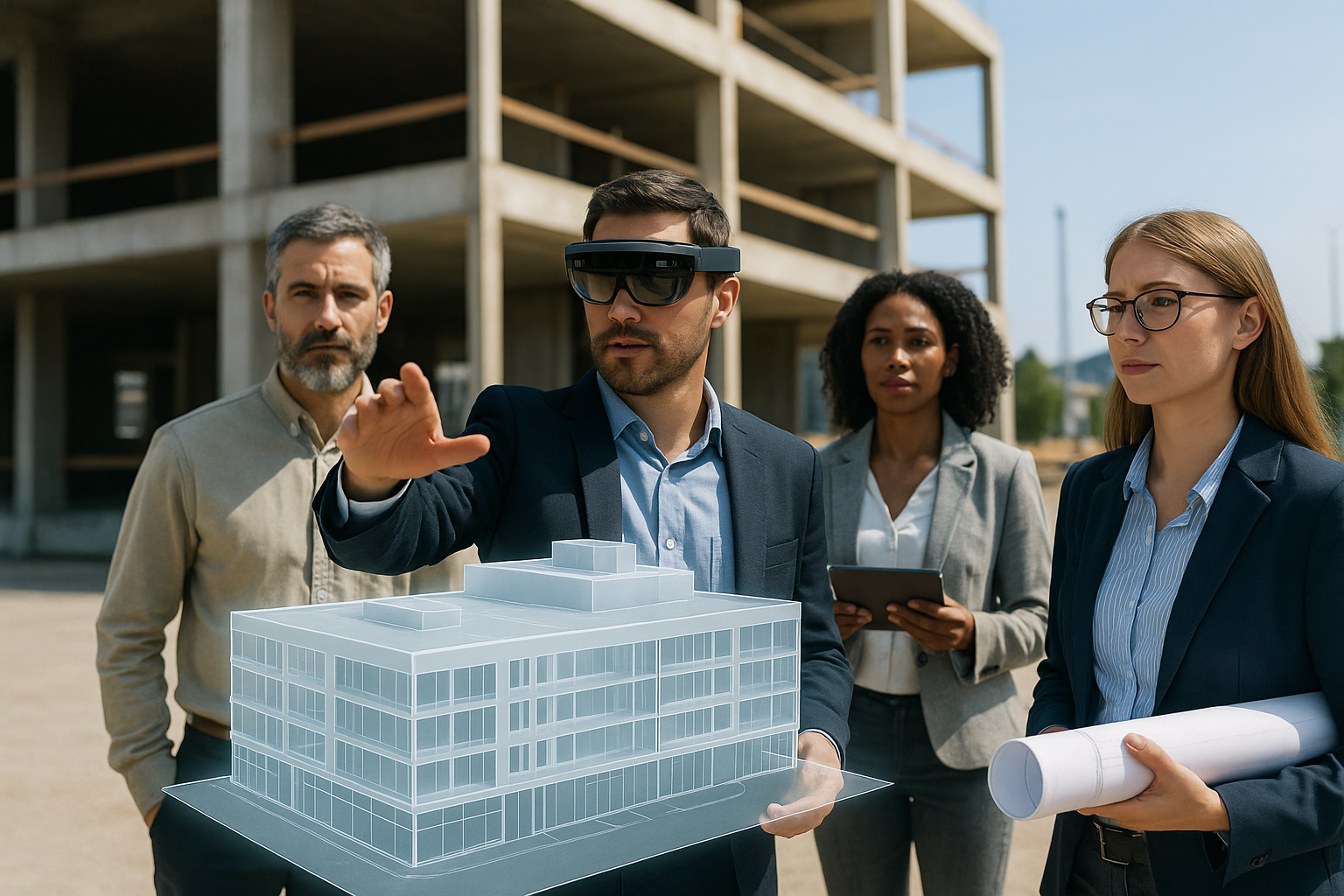AR in architectural education is rapidly changing how students learn design thinking, construction systems, and spatial problem-solving. Instead of relying solely on static plans or desktop 3D modeling, students can now walk through their designs at full scale, collaborate in mixed reality, and interact with building systems in real-world contexts—all from the classroom or remotely.
As architecture programs embrace digital transformation, augmented reality is becoming a powerful pedagogical tool. From studio critiques to structural engineering courses, platforms like AUGmentecture are helping the next generation of architects learn by doing—immersively, visually, and collaboratively.
Why AR in Architectural Education Is Gaining Momentum
Architecture has always been a tactile discipline. Yet many students struggle to mentally visualize scale, proportion, and spatial relationships when working from 2D drawings or even screen-based 3D models.
AR solves this disconnect by letting students:
- View and walk through their own models in real space
- See how light, form, and material interact at full scale
- Learn construction logic by interacting with layered assemblies
This leads to deeper understanding, faster iteration, and more engaging learning experiences.
Core Benefits of AR in Architectural Training
Immersive Design Critiques in AR
Instead of pin-ups or Zoom screens, students can host critiques where instructors and peers walk through the AR version of their project. This supports:
- Discussion of circulation, massing, and envelope design
- Collaborative markup or live adjustments
- Full-scale empathy with users, from public entries to private interiors
Hands-On Structural and Systems Learning
AR can layer mechanical, electrical, and plumbing (MEP) systems onto physical spaces—helping students grasp complex integrations that are often abstracted in textbooks. This benefits courses in:
- Construction systems
- Environmental controls
- Digital fabrication and detailing
Historic Building Visualization and Analysis
Students studying architectural history or preservation can use AR to explore site-specific reconstructions. Imagine examining a Gothic cathedral’s buttresses in 3D space—without leaving campus.
This allows for comparative analysis, material understanding, and deeper cultural appreciation.
Use Cases of AR in Architecture Schools
First-Year Studio Integration
Introducing AR early in design studio helps students build stronger spatial intuition. Even simple massing models become meaningful when students walk through them in scale, identifying issues and adjusting their designs instinctively.
Capstone Projects and Thesis Reviews
Graduate students presenting complex urban interventions or adaptive reuse proposals benefit from showing their ideas in AR on-site. Stakeholders can join remotely to explore the model interactively—offering feedback from anywhere in the world.
Collaborative Design-Build Studios
Design-build projects can leverage AR to overlay models onto job sites, confirm assembly details, and improve communication between students, professors, and fabricators.
How AUGmentecture Supports AR in Architectural Education
AUGmentecture provides a lightweight, mobile-friendly AR solution for architecture students and instructors. Key features include:
- Support for Revit, SketchUp, Rhino, and other modeling formats
- Markerless placement for indoor or outdoor display
- Collaboration features for comments, walkthroughs, and multi-device viewing
- Easy onboarding—no complex VR hardware required
This makes it ideal for integration into architecture studio courses, technical training, or interdisciplinary collaboration with engineering and urban planning students.
Case Study: AR at a Design School in Scandinavia
Students at a university in Denmark used AR throughout a semester-long sustainable housing studio. Over the course, they:
- Reviewed daylighting and views directly in AR using solar overlays
- Collaborated in real time on spatial changes while standing in the proposed site
- Presented to visiting critics from other countries who accessed the AR model remotely
Faculty reported higher engagement and stronger spatial reasoning from the cohort—especially among first-year students.
Future of AR in Architectural Education
As universities move toward blended and hybrid learning models, AR will play a larger role in:
- Remote studio collaboration
- Cross-disciplinary projects with urban design, sustainability, and AI
- Credentialing skills like BIM literacy, digital construction, and XR presentation
Expect to see AR integrated into NAAB accreditation standards and becoming a core competency in 21st-century architecture curricula.
Conclusion
AR in architectural education bridges the gap between theory and practice, screen and space, model and material. It equips students with the tools to think spatially, collaborate effectively, and present their ideas in compelling new ways.
Platforms like AUGmentecture make this possible for architecture programs of all sizes. Whether you’re rethinking first-year studios or upgrading capstone presentations, AR will play a critical role in shaping the future of architectural training.




